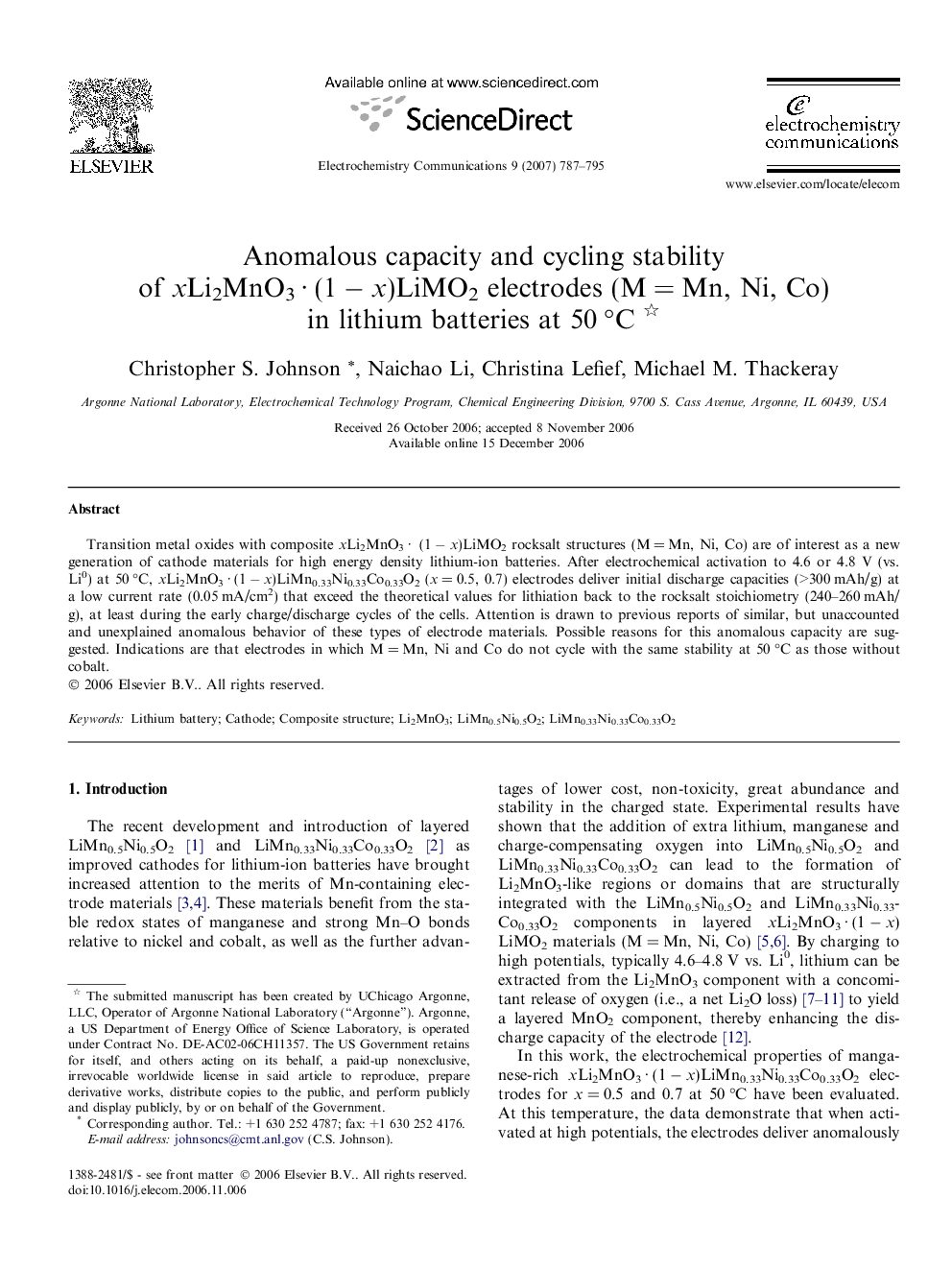| Article ID | Journal | Published Year | Pages | File Type |
|---|---|---|---|---|
| 182101 | Electrochemistry Communications | 2007 | 9 Pages |
Transition metal oxides with composite xLi2MnO3 · (1 − x)LiMO2 rocksalt structures (M = Mn, Ni, Co) are of interest as a new generation of cathode materials for high energy density lithium-ion batteries. After electrochemical activation to 4.6 or 4.8 V (vs. Li0) at 50 °C, xLi2MnO3 · (1 − x)LiMn0.33Ni0.33Co0.33O2 (x = 0.5, 0.7) electrodes deliver initial discharge capacities (>300 mAh/g) at a low current rate (0.05 mA/cm2) that exceed the theoretical values for lithiation back to the rocksalt stoichiometry (240–260 mAh/g), at least during the early charge/discharge cycles of the cells. Attention is drawn to previous reports of similar, but unaccounted and unexplained anomalous behavior of these types of electrode materials. Possible reasons for this anomalous capacity are suggested. Indications are that electrodes in which M = Mn, Ni and Co do not cycle with the same stability at 50 °C as those without cobalt.
